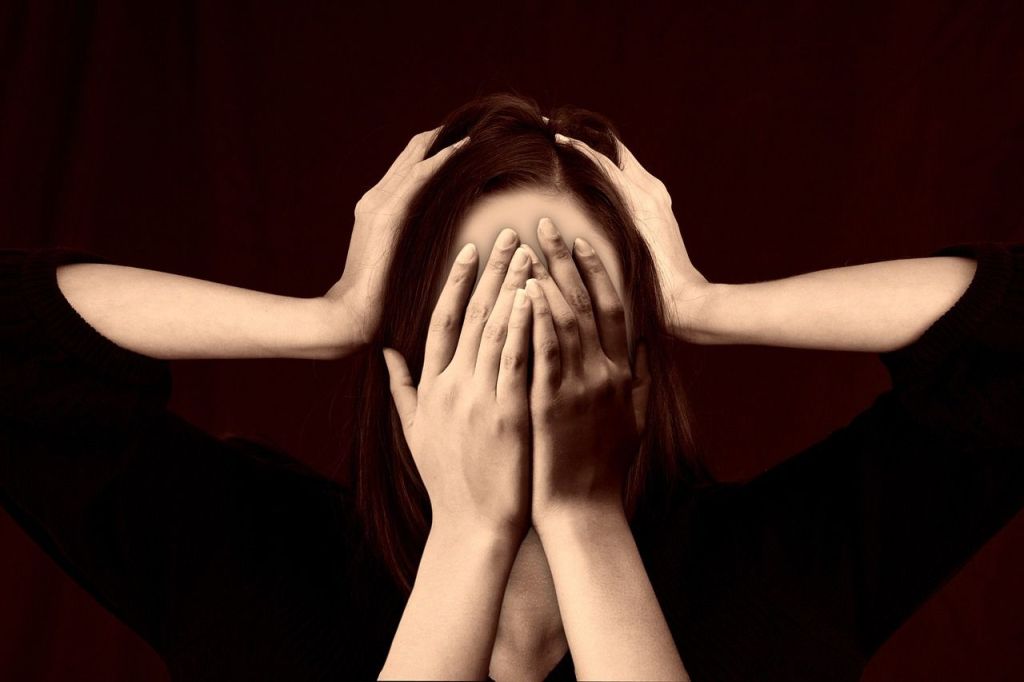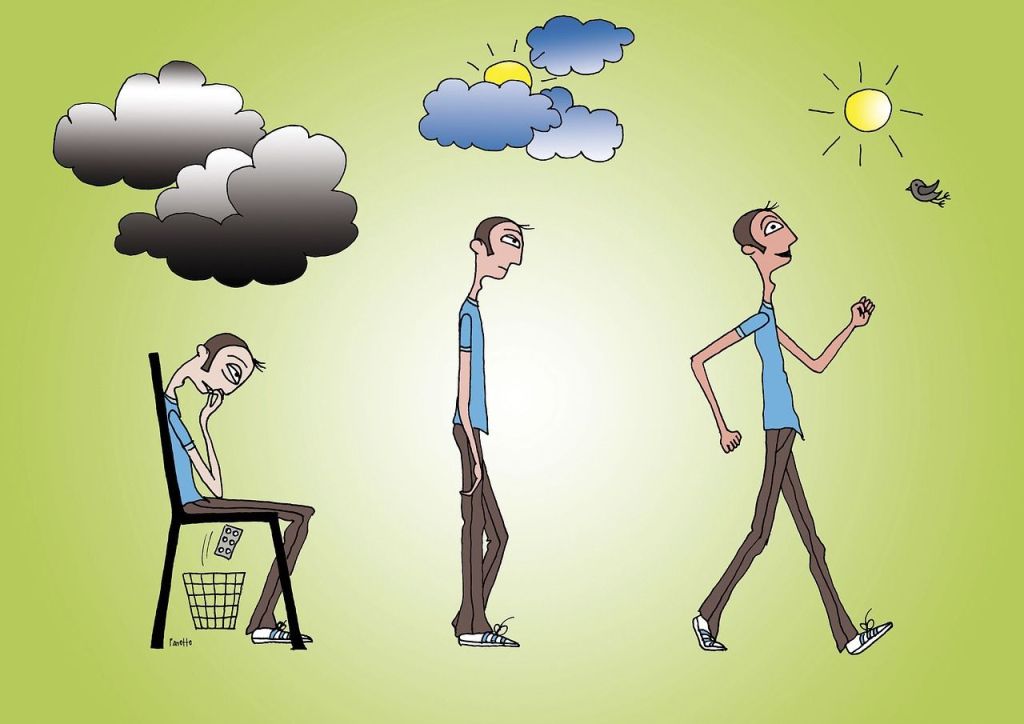Understanding Bipolar Disorder: Symptoms, Types, Causes, and Treatment Options

Bipolar disorder, formerly known as manic-depressive illness, is a complex mental health condition characterized by extreme mood swings. These mood swings include emotional highs (mania or hypomania) and lows (depression). This disorder affects millions of people worldwide and can significantly impact daily life, relationships, and overall well-being.
This blog post will explore the symptoms, causes, and treatment options for bipolar disorder to provide a comprehensive understanding of this challenging condition.
Symptoms of Bipolar Disorder
Bipolar disorder is characterized by two main phases: manic (or hypomanic) episodes and depressive episodes. Each phase has its distinct symptoms and can vary in intensity and duration.
Manic Episodes
During a manic episode, individuals may experience the following symptoms:
- Elevated Mood: Feeling unusually happy, optimistic, or irritable.
- Increased Energy: Having a surge of energy and activity levels, often leading to overcommitment and exhaustion.
- Reduced Need for Sleep: Feeling rested after only a few hours of sleep or not needing sleep at all.
- Grandiosity: Having an inflated sense of self-esteem or confidence.
- Talkativeness: Speaking rapidly and excessively, often jumping from one topic to another.
- Racing Thoughts: Experiencing a rapid flow of ideas and thoughts.
- Impulsivity: Engaging in risky behaviors such as excessive spending, reckless driving, or unprotected sex.
- Distractibility: Having difficulty focusing or maintaining attention.
Hypomanic Episodes
Hypomania is a milder form of mania and includes similar symptoms, but they are less severe and may not significantly impair daily functioning. However, hypomania can still lead to risky behaviors and should be taken seriously.
Depressive Episodes
During a depressive episode, individuals may experience the following symptoms:
- Persistent Sadness: Feeling sad, empty, or hopeless most of the day, nearly every day.
- Loss of Interest: Losing interest or pleasure in activities once enjoyed.
- Fatigue: Experiencing a lack of energy or feeling constantly tired.
- Sleep Disturbances: Having trouble sleeping or sleeping too much.
- Changes in Appetite: Significant weight loss or gain, or changes in appetite.
- Concentration Issues: Difficulty concentrating, making decisions, or remembering things.
- Feelings of Worthlessness: Experiencing excessive guilt or feelings of worthlessness.
- Thoughts of Death or Suicide: Having recurrent thoughts of death, suicidal ideation, or attempts.
Types of Bipolar Disorder
Bipolar disorder is divided into several types, each defined by the pattern and severity of mood episodes:
Bipolar I Disorder
Characterized by at least one manic episode that lasts for at least seven days or is severe enough to require hospitalization. Depressive episodes typically occur as well, lasting for at least two weeks.
Bipolar II Disorder
Involves at least one hypomanic episode and one major depressive episode. Hypomanic episodes are less severe than manic episodes but still are noticeable.
Cyclothymic Disorder
Involves periods of hypomanic symptoms and periods of depressive symptoms lasting for at least two years (one year in children and adolescents). Symptoms are less severe than those in Bipolar I or II but still cause significant distress.
Other Specified and Unspecified Bipolar and Related Disorders
Includes bipolar-like disorders that do not fit the specific criteria for Bipolar I, II, or Cyclothymic Disorder but still involve significant mood swings and disruptions.
Causes and Risk Factors
The exact cause of bipolar disorder is not fully understood, but several factors are believed to contribute to its development:
1) Genetic Factors: Bipolar disorder tends to run in families, suggesting a genetic component. Individuals with a family history of bipolar disorder are at a higher risk of developing the condition.
2) Biological Factors: Brain structure and function abnormalities have been observed in individuals with bipolar disorder. Neurotransmitter imbalances, particularly involving serotonin, dopamine, and norepinephrine, are also implicated.
3) Environmental Factors: Stressful life events, trauma, and significant changes in life can trigger mood episodes in susceptible individuals. Environmental factors may interact with genetic predispositions to increase the risk of developing bipolar disorder.
4) Other Risk Factors:
– Age: Bipolar disorder typically emerges in late adolescence or early adulthood.
– Substance Abuse: Drug or alcohol abuse can exacerbate symptoms and increase the risk of developing bipolar disorder.
Treatment Options

Bipolar disorder is a lifelong condition that requires ongoing management. Treatment typically involves a combination of medication, psychotherapy, and lifestyle changes.
1) Medication
– Mood Stabilizers: Medications such as lithium, valproate, and lamotrigine help stabilize mood swings and prevent episodes of mania and depression.
– Antipsychotics: Atypical antipsychotic medications like quetiapine, olanzapine, and risperidone can help manage symptoms of mania and depression.
– Antidepressants: These are sometimes used to treat depressive episodes but are typically combined with mood stabilizers to avoid triggering mania.
– Antidepressant-Antipsychotic Combinations: Medications that combine antidepressant and antipsychotic properties, such as Symbyax (fluoxetine and olanzapine), can be effective for some individuals.
2) Psychotherapy
– Cognitive Behavioral Therapy (CBT): Helps individuals identify and change negative thought patterns and behaviors, improving mood regulation.
– Interpersonal and Social Rhythm Therapy (IPSRT): Focuses on stabilizing daily rhythms and routines to prevent mood episodes.
– Family-Focused Therapy: Involves family members in treatment to improve communication, support, and understanding of the disorder.
3) Lifestyle Changes
– Regular Sleep Schedule: Maintaining a consistent sleep routine can help stabilize mood.
– Healthy Diet: Eating a balanced diet can improve overall well-being and mood stability.
– Exercise: Regular physical activity can reduce symptoms of depression and anxiety.
– Stress Management: Practicing relaxation techniques such as mindfulness, meditation, and yoga can help manage stress.
Living with Bipolar Disorder

Living with bipolar disorder can be challenging, but with proper treatment and support, individuals can lead fulfilling lives. Here are some tips for managing the condition:
1) Educate Yourself: Learn about bipolar disorder to better understand your symptoms and treatment options.
2) Build a Support Network: Surround yourself with supportive friends, family, and mental health professionals.
3) Monitor Your Mood: Keep track of your mood changes and triggers to identify patterns and prevent episodes.
4) Follow Your Treatment Plan: Adhere to prescribed medications and therapy sessions to maintain stability.
5) Set Realistic Goals: Break tasks into manageable steps and celebrate small achievements.
6) Practice Self-Care: Prioritize activities that promote physical, emotional, and mental well-being.
Conclusion
Bipolar disorder is a complex and challenging mental health condition, but with the right treatment and support, individuals can manage their symptoms and lead fulfilling lives. Understanding the symptoms, causes, and treatment options is essential for those affected by bipolar disorder and their loved ones. If you or someone you know is struggling with bipolar disorder, seek professional help to develop an effective treatment plan and improve quality of life.
I have Bipolar I and I’ve learned a lot about how to treat it by cooperating with my doctor and therapist. Everyone’s illness is different. I tend not to have depression symptoms. I’ve been healthy for so long I’ve forgotten how crazy I acted when I was ill. It is shocking to me how our society denies that people on the streets need help and how letting them refuse medication creates a huge rift. I was homeless and I am so grateful I was forced to take medication. I never would have recovered were it not for haldol.
LikeLiked by 1 person